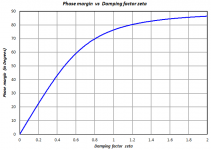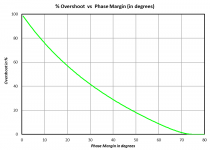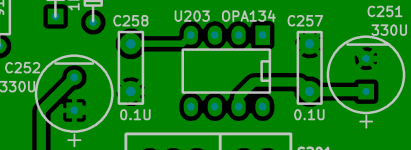No signs of virus in Da Nang. Did I miss anything good here.... I mean besides the usual slapping each other around?
-RNM
Hopefully it does not spread to your area, but it seems to be quite contagious so far.
Disclaimer: I am not a doctor, but if you are able to procure Rx drugs from Japan, I might be tempted to grab some Favipiravir (trade name Avigan) if I were in a vulnerable age group. It's a broad spectrum antiviral (nucleoside analog) and should be effective against coronaviruses. It has been approved in Japan iirc for influenza and seems to have a decent safety profile. The most studied and effective antiviral against CoV should be Remdesivir but it's not approved anywhere in the world.
Last edited:
My issue here is that the stylus is only used contacting vinyl, there are no SS LP's. The folks at B&K are great at analysis, I wish they had attempted to explain the lowering of the resonant frequency but at the same Q.
Scott,
What do you mean with a SS LP, a solid state LP having no compliance ?
Because that's what the accelerometer was supposed to be where only the Cart resonance became visible.
The lowering of the resonant frequency, the second line in their images, was caused by the additional vinyl compliance when playing a test record, thus being the combined Cart resonance and the Tip-mass/Vinyl-compliance resonance.
But you probably refer to a completely different thing with SS LP.
Hans
In Pavel's test it was the difference in the sibilance I noticed most.
Yeah.
Op-amp rolling is a waste of time, IMO dropping in a new amplifier requires a total look at the associated circuit possibly a re-engineering and qualification, otherwise it is just more random data.
With all the talk I see little science going on.
Where is the fun in that? When I posted the Whammy headphone amp I didn't think about that much and just listed the few I had on hand that worked. The differences are subtle, unless of course they oscillate or fire comes out.😀
That's real entertainment.
But you probably refer to a completely different thing with SS LP.
Hans
Stainless steel, my point is the response on a hard surface does not represent actual use i.e. you can't put that on a data sheet.
I'm working on recreating those files, I generated them with an interactive script and did not save the files only the pictures.
In the realm of anecdote, my friend in CA so likes his new X260.8 Pass power amps he's just splurged on a factory recon set of preamps as well. With phono and line stage that's 5 boxes. I am mildly jealous.
Oh and Nelson is right, Apogees are fine when you get medieval on them 🙂
Oh and Nelson is right, Apogees are fine when you get medieval on them 🙂
When I posted the Whammy headphone amp I didn't think about that much and just listed the few I had on hand that worked. The differences are subtle, unless of course they oscillate or fire comes out.
I've rolled about a half dozen opamps into the Azul headphone amp, which is a lot like Whammy except the output stage is an LH0033 hybrid rather than a discrete-transistor buffer. None of them oscillated or exhibited unwanted behaviors; their transient response was consistent with a second order linear system whose damping factor zeta is about 0.85.
Yet I heard (small) differences. The one whose sound I liked best was a JFET-input unit designed by George Erdi. The mighty all-bipolar, Silicon-Germanium OPA1611, wasn't quite as pleasing. Nor were the other opamps I tried.
_
Attachments
Last edited:
The mighty all-bipolar, Silicon-Germanium OPA1611, wasn't quite as pleasing. Nor were the other opamps I tried.
What power supply and filter caps, if one may ask?
Each of Azul's two supply rails has two voltage regulators in series, the old pre-regulator then final regulator idea. Final out is plus/minus 15V.
Each opamp IC has two 100nF film caps plus two 330uF electrolytic caps, laid out right next to the supply pins. One film and one electro, per rail, per chip. Output stage has several of each cap type per rail. See Gerber snippet attached; it's the DC servo opamp for the right channel.
film cap Mouser P/N 871-B32529C1104J189
electrolytic cap Mouser P/N 667-EEU-FR1E331B
rectifier bulk filter cap Mouser P/N 647-UBY1V302MHL (4 total, 2 per rail). 26 milliohms, 4.26A ripple per cap
rectifier diode Mouser P/N 863-80SQ045NRLG . Brawny Schottky with concomitant high leakage; I don't care.
One of these days I'll create a thread about Azul; but now ain't the right time.
_
Each opamp IC has two 100nF film caps plus two 330uF electrolytic caps, laid out right next to the supply pins. One film and one electro, per rail, per chip. Output stage has several of each cap type per rail. See Gerber snippet attached; it's the DC servo opamp for the right channel.
film cap Mouser P/N 871-B32529C1104J189
electrolytic cap Mouser P/N 667-EEU-FR1E331B
rectifier bulk filter cap Mouser P/N 647-UBY1V302MHL (4 total, 2 per rail). 26 milliohms, 4.26A ripple per cap
rectifier diode Mouser P/N 863-80SQ045NRLG . Brawny Schottky with concomitant high leakage; I don't care.
One of these days I'll create a thread about Azul; but now ain't the right time.
_
Attachments
Last edited:
Nor were the other opamps I tried.
Note 600 Ohm load drive definitely not designed for audio.
Each of Azul's two supply rails has...
All those electrolytics may dominate the feedback loop response of the associated regulator, no?
Hopefully it does not spread to your area, but it seems to be quite contagious so far.
Disclaimer: I am not a doctor, but if you are able to procure Rx drugs from Japan, I might be tempted to grab some Favipiravir (trade name Avigan) if I were in a vulnerable age group. It's a broad spectrum antiviral (nucleoside analog) and should be effective against coronaviruses. It has been approved in Japan iirc for influenza and seems to have a decent safety profile. The most studied and effective antiviral against CoV should be Remdesivir but it's not approved anywhere in the world.
Thank you for the good info. I will look into it. 🙂
-Richard
In reality the Whammy does well with many opamps based on feedback from builders. I fear my ears are not what they used to be what with some of my hobbies. The differences are small and blindly would be tough to I’d. I really liked the Azul design and packaging at BA 2019.
Stop it right now, there are dead people trying to sleep.
In the realm of anecdote, my friend in CA so likes his new X260.8 Pass power amps he's just splurged on a factory recon set of preamps as well. With phono and line stage that's 5 boxes. I am mildly jealous.
Oh and Nelson is right, Apogees are fine when you get medieval on them 🙂
Impressive range of amplifiers and I am sure they will be very good. However, in the brochure, these amplifiers are called 'fine musical instruments'.
Is that what an amplifier should be, a fine musical instrument? And does it make the owner that plays music through it a distinguished musician?
Yet I heard (small) differences. The one whose sound I liked best was a JFET-input unit designed by George Erdi. The mighty all-bipolar, Silicon-Germanium OPA1611, wasn't quite as pleasing. Nor were the other opamps I tried.
_
Did you find any measurable differences in the field of distortion/ EMI resistance that could correlate with these observations?
Is that T bait? 😉Impressive range of amplifiers and I am sure they will be very good. However, in the brochure, these amplifiers are called 'fine musical instruments'.
Is that what an amplifier should be, a fine musical instrument? And does it make the owner that plays music through it a distinguished musician?
In reality the Whammy does well with many opamps based on feedback from builders. I fear my ears are not what they used to be what with some of my hobbies. The differences are small and blindly would be tough to I’d. I really liked the Azul design and packaging at BA 2019.
So it’s very difficult to tell the differences in blind testing, but it is easier if you know what’s currently in the circuit?
- Status
- Not open for further replies.
- Home
- Member Areas
- The Lounge
- John Curl's Blowtorch preamplifier part IV


